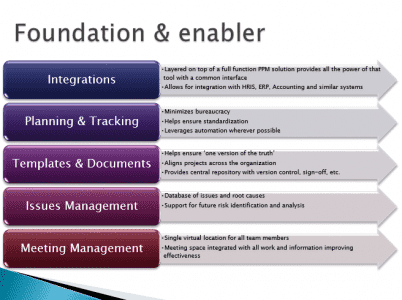
Hobart Alter once said, “If it’s fun, it never works. And if it isn’t fun, it’ll never work.” Similar thoughts were shared by Andy Jordan (named in top lists of most inspiring and most influential people in project management) in our recent webinar– All I Want for the Holidays is Effective Collaboration. During this webinar, Andy shared interesting perspectives on project collaboration and elaborated on how project collaboration is able to enhance project success rates.
There are various reasons why, even with the best of intentions, tools go wrong – among these include no standards for the tools and no accountability. Now, you can argue the tool is only as effective as the effort put in, but there has to be some inherent value in the tool or problem that it solves or there is no need for it from the start. We all must agree that collaboration is the core problem addressed, and the missing piece for both small and large scale projects. Let’s take a look why that is.
Why Tools Go Wrong
Often times new tools are adopted with the intention of making things “better” or “easier” but no quantifiable goal or problem identified. They are then misused, misunderstood or they don’t have any buy-in and often get ignored. The tools that do get adopted end up being too specialized, too niche or simply irrelevant. Before you start using a new tool, specifically for project management, start with identifying the problem that you are trying to solve and then take a look at which solution will be the most effective.
Small projects and collaboration
Projects are everywhere, in every organization, at every level. They can be new initiatives, older ones being revisited, small and repeatable maintenance projects, or exploratory and innovative projects. Whatever the nature and combination of projects in your organization, unless you are working on them alone in a vacuum, they take some degree of collaboration. Teams are critical to the betterment and success of projects and incorporating different ideas and exploring new options result in projects far better than those that are done in a silo. That’s why teams exist and are committed to keeping projects on track and constantly getting better.
However, in today’s working environment teams are not always in the same room or even the same country, and the more diverse and dispersed they are, the more a collaboration tool can help their success.
It is important to track all projects in a systematic manner, as often times larger and more important projects get all the focus; neglecting smaller or sometimes less fun projects. It is important not to let smaller departmental initiatives fall through the cracks or end up incomplete due to the lack of attention.
Collaboration tools can help you do the planning, envision the workflow, track the daily work and capture the actuals against the plan. Management and reporting is also a desirable feature. A collaboration tool can act as a virtual project manager for smaller projects that would otherwise go unfinished. Essentially, if the right tool is configured in the correct way and people know how to use it efficiently, then the tool is all the “project management” you need! And if you are able to put something like that together you will make your organization more efficient and ultimately, more successful.
Bigger projects and collaboration
Bigger projects are those that require more time and work. Does collaboration help? Absolutely! The fundamentals are no different; bigger projects need efficient and effective collaboration. They tend to have formally appointed project managers to ensure the success of the project, however, if a collaboration tool can do most of the work, then it should be utilized so that the project manager can be valuable in different ways. Ideally, the project manager can focus on planning, staffing, and making decisions based on current needs, rather than administrative tasks that can be handled by a tool.
See below the five elements of collaboration:
Integrations: When we talk about integration, this is adding an effective collaboration tool on top of a fully functioning PPM solution to provide all the power of that PPM tool with a common interface. This also allows integration with other systems like ERP, HR, Accounting etc.
Planning &Tracking: Collaboration minimizes bureaucracy. It is important to have a structure for projects, especially the more important ones. A collaboration tool is essential to save time and allow people to work on other parts where they can add more value and be more efficient.
Templates & Documents: When there are multiple people reviewing documents and updating things, you must ensure that the most current version is constantly being viewed. This aligns projects across the organization.
Issues Management: The PPM tool should have a database of issue that happened in the past and the root causes, so that we can leverage that and do the future planning.
Meeting Management: It is important to have a virtual location where all the team members are able to meet. This space should be integrated with all the work that is being done and the information that is needed to make effective and improved changes.
A collaboration tool brings a lot of value and improvement to an organization. A tool that is implemented correctly, used in the right manner with the right kind of support, becomes more than just an effective tool. It adds value and presents you with knowledge that you may not have been aware of before. It will show you what is working and what is not.
To learn how you can leverage collaboration in your organization, watch the full on-demand webinar “All I Want for the Holidays is Effective Collaboration.”


![Collectively Deliver on Strategy with Digital Transformation [Video]](https://blog.planview.com/wp-content/uploads/2018/07/Collectively-Deliver-on-Strategy-with-Digital-Transformation-2.jpg)


